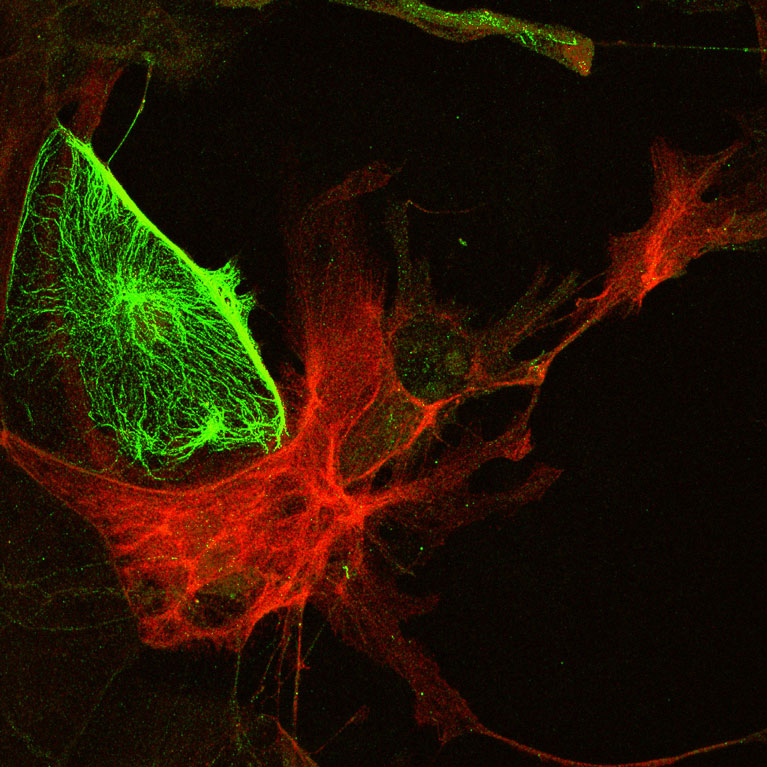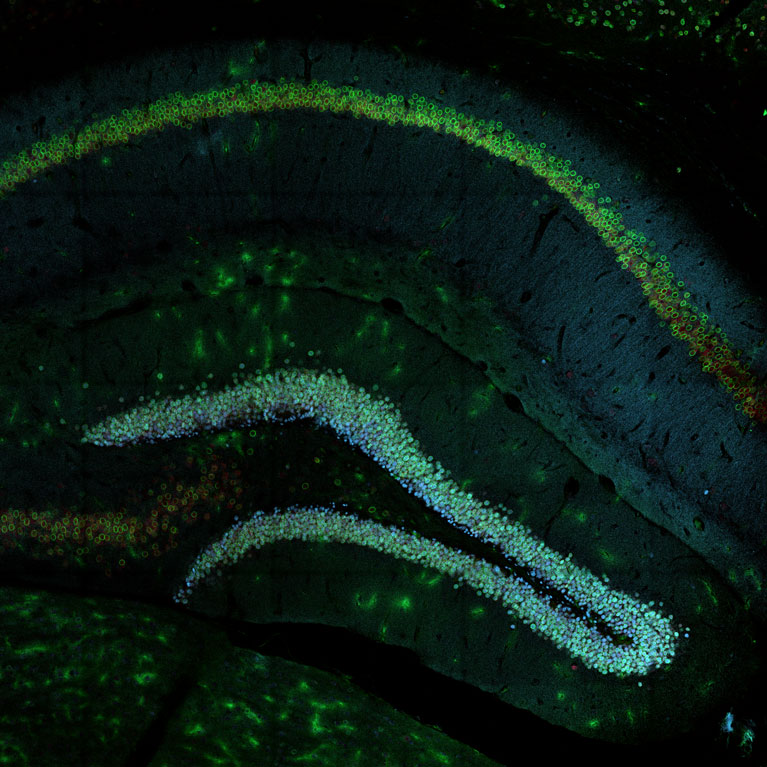About the lab

Within the brain there exists a balance between activating and inhibiting neurons, akin to the balance between accelerating and braking a car. Maintaining this balance (called homeostasis) in brain circuitry is critical for cognitive processes, while disruption of it can lead to disorders such as schizophrenia and autism. Although symptoms of these diseases appear at different times in peoples’ lives, they may result from a similar cause: abnormal brain development during critical periods early in life.

Margarita Behrens is examining genes, environmental influences and the interplay between the two to determine why some individuals develop a neurodevelopmental disorder while others do not. With her strong background in genomics, neurobiology and physiology, Behrens focuses on neural circuit formation and disruption within the prefrontal cortex, an area of the brain responsible for decision-making and reasoning, from late pregnancy through adolescence.
Her team uses a variety of methods to understand the rules that govern brain maturation during the perinatal period, when neuronal circuits are established. They measure the electrical activity of neuronal circuits; image the formation of neuronal synapses; and study the maturation of subtypes of neurons by looking at a layer of chemical tags on DNA and histones called the epigenome. These tags modify the way the DNA to turn genes on and off, and are increasingly thought to play a major role in health and disease. As part of a large consortium, the Behrens team identifies new subtypes of neurons based on their epigenomic patterns (epigenetic markers) using methods that allow analysis of epigenetic marks at a single-cell level. Charting the different subtypes of neurons in the brain—as well as targeting variations in the epigenome and changes that occur during neuronal maturation—could lead to a better understanding of brain circuits and improved interventions for a host of neuropsychiatric and neurodevelopmental disorders such as bipolar disorder, depression, schizophrenia and autism.